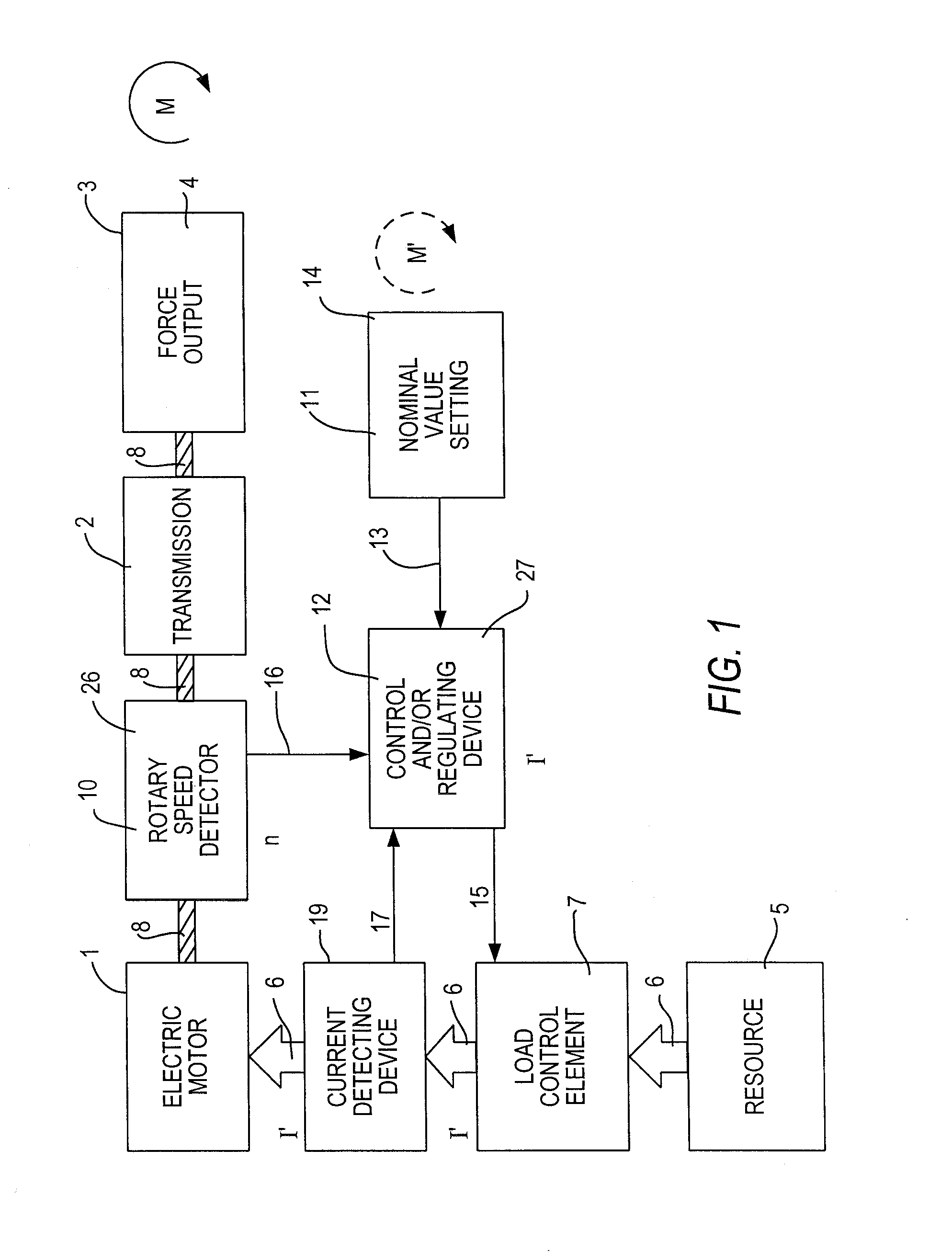Torque limiting device for an electric motor
a technology of torque limit and electric motor, which is applied in the direction of electric controller, dynamo-electric converter control, instruments, etc., can solve the problems of screw, insertion tool and/or workpiece damage, etc., and achieve the effect of faulty screwing, unacceptably high torque and faulty way
- Summary
- Abstract
- Description
- Claims
- Application Information
AI Technical Summary
Benefits of technology
Problems solved by technology
Method used
Image
Examples
Embodiment Construction
[0025]FIG. 1 shows an electric motor 1 with a transmission 2 and a force output 3 associated therewith. The force output 3 can be formed, for example, as a clamping chuck 4. The drawing further shows a rotary speed detecting device 10 formed as a mechanically coupled rotary speed sensor 26, a current detecting device 9, a nominal value setting 11 formed as an operator element 14, a control and / or regulating device 12, and a load control element 7.
[0026]The operator can fix a maximum torque M′ occurring on the force output 3, by means of the nominal value setting 11 formed as the operating element 14. The maximum permissible torque M′ adjusted by the operator on the nominal value setting 11 is transmitted from it by means of a torque setting signal 13, to the control and / or regulation device 12.
[0027]The electric motor 1 is supplied from a not illustrated electrical energy source 5 with a motor current 6, which passes through the load control element 7. This leads to a start of the e...
PUM
 Login to View More
Login to View More Abstract
Description
Claims
Application Information
 Login to View More
Login to View More - R&D
- Intellectual Property
- Life Sciences
- Materials
- Tech Scout
- Unparalleled Data Quality
- Higher Quality Content
- 60% Fewer Hallucinations
Browse by: Latest US Patents, China's latest patents, Technical Efficacy Thesaurus, Application Domain, Technology Topic, Popular Technical Reports.
© 2025 PatSnap. All rights reserved.Legal|Privacy policy|Modern Slavery Act Transparency Statement|Sitemap|About US| Contact US: help@patsnap.com



